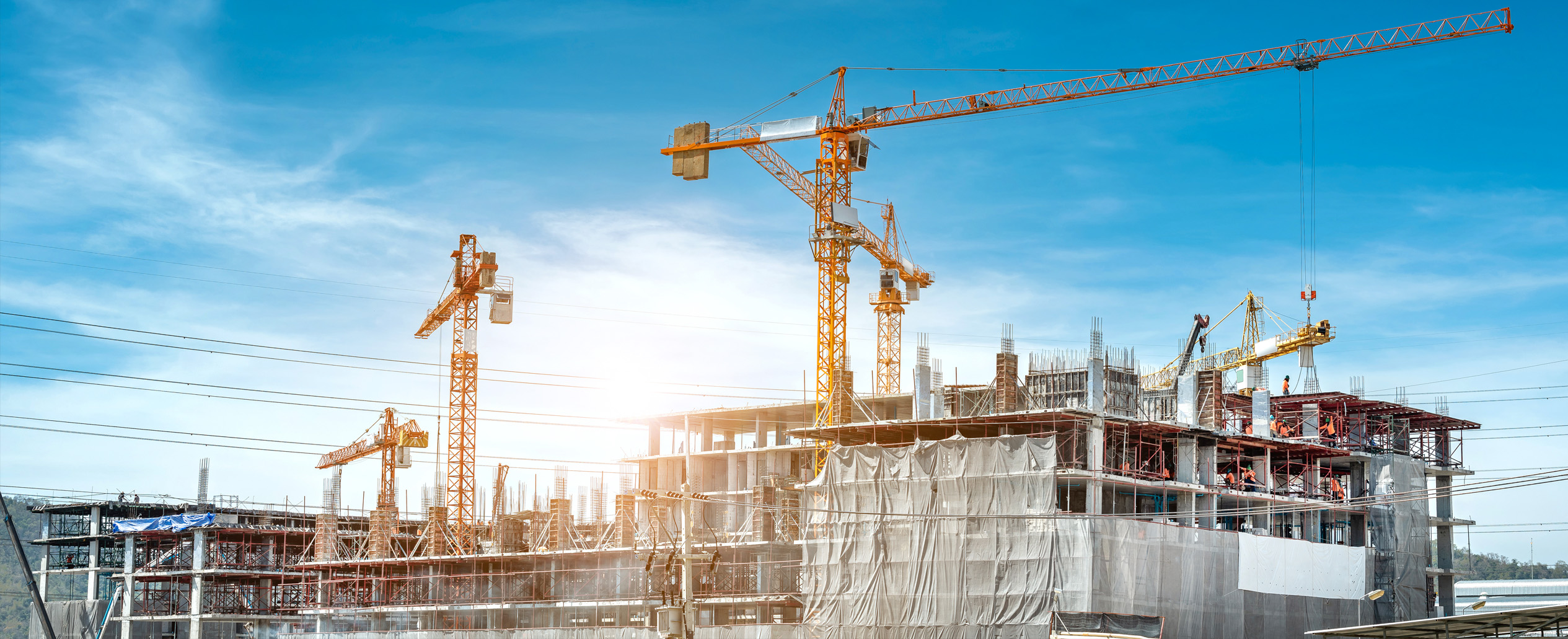Common questions and detailed answers can be found here.
Part 12 of the Building Regulations 2018 outline the mandatory notification stages for inspections that are dependent upon the type and in some circumstances the building classification and are as follows:
- Construction of a new building and/or an alteration to an existing building, the following stages are prescribed as per regulation 167 as follows:
Before placing a footing;- Before pouring an in situ reinforced concrete member specified in the relevant building permit by the relevant building surveyor;
- Completion of the framework;
- During the carrying our of building work specified in the relevant building permit by the relevant building surveyor for the purposes of any inspection required by regulation 172 i.e. specified building elements of a class 2, 3 or 4 building comprising lightweight construction required to resist the spread of fire and penetrations to building elements required to resist the spread of fire / smoke of a class 2, 3, 4, 9a or 9c building.
- Final upon completion of all building work.
- Demolition of removal of a building, the following stages are prescribed as per regulation 167 as follows:
- Completion of any precautions required to be taken under regulation 116 or 117 i.e. precautions to protect the public or precautions before or during demolition works;
- Final upon completion of all building work.
- Construction of a swimming pool or spa, the following stages are prescribed as per regulation 169 as follows:
- Completion of any excavations;
- Prior to pouring any footing or in situ reinforcement concrete member specified in the relevant building permit by the relevant building surveyor;
- Completion of any precautions required to be taken under regulation 116 i.e. precautions to protect the public;
- Final upon completion of all building work.
Where do I apply for Owner Builder Consent?
An owner-builder is a person who intends to carry out building works on there property who is not in the business of building.
Did you know that an owner-builder takes on all the risks and responsibilities of a registered building practitioner? Before you decide to do-it-yourself, get the facts on being an owner-builder from https://www.vba.vic.gov.au/owner-builders
Owner-builders must obtain a certificate of consent for any domestic building work with a value over $16,000 in order to obtain a building permit.
- Owner-builders can only obtain a building permit for one home in a five year period.
- Owner-builders do not build for a profit (rent or sale).
- Owner-builders must be an owner of the land/property (Must have their name on the certificate of title).
- Owner-builders must reside and continue to reside, or intend to reside in the property.
Building permit’s are given two time frames which need to be adhered to i.e. commencement and completion date. These dates are clearly nominated on your building permit and commence from the date that the building permit is issued.
Regulation’s 53 and 54 nominate the following commencement and completion time frames as follows:
| Class of Building | Commencement | Completion |
| Re-erection of a class 1 or 10 buildings | 6 months | 12 months |
| Class 1 or 10 buildings | 12 months | 24 months |
| Class 10b swimming pools and safety barriers (Other than those being carried out concurrently under other building permit approvals) | 6 months after the building works commence | |
| Class 2 – 9 buildings | 12 months | 36 months |
If building work is to be completed in more than one stage or more than one building permit is issued in relation to that building permit, the completion date is the completion date nominated on the first stage building permit.
The relevant building surveyor may extend the period within which any building work is required to be commenced or completed under regulations 53 and 54 prior to lapsing of the building permit if the relevant building surveyor considers that the extent of the building works warrants an extension.
What is the difference between a town planning permit and building permit?
Building and town planning permits are governed by two different Acts of Parliament and administered by different professionals i.e. a registered building surveyor issues building permits and council’s town planning department issues town planning permits. In simple terms a building permit certifies that proposed building works complies with the Building Regulations whereas a planning permit is issued for the use and/or development of land.
A planning permit can be issued without a building permit whereas a building permit can’t be issued without a planning permit, and, in such a case, the building permit must be consistent with the planning permit. In other words, any required planning permit must be obtained first. You may require a permit under one Act but not the other, or two permits (one under each Act) or no permit at all.
There are two types of services a building surveyor’s can provide / administer i.e. a relevant building surveyor and a consultant building surveyor.
A relevant building surveyor administers statutory functions under section 76 of the Building Act 1993 i.e. issues building permits, carries out mandatory inspections and issues occupancy permits / certificate of final inspections and is prohibited from been involved in the design of building work.
A consultant building surveyor is one that is involved in the design of building work, attends design team meetings, makes applications for report and consent approvals, building appeals board applications for design variations etc.
Building surveyors are prohibited from taking on the role as a relevant building surveyor and a consultant building surveyor for the same project and there roles are to be clearly identified at the early stages on engagement to avoid a conflict.
The Building Regulations 2018 requires building permits to be in place prior to the commencement of building works unless otherwise exempted under schedule 3 of the Building Regulations. The requirements for a building permit are based on the scope / type of works rather than the value of the works.
The table below lists common types of building work and whether they require a building permit and/or otherwise:
Always consult with a building surveyor when in doubt or your unable to determine whether the works are exempted from a building
permit.
A planning permit is a legal document that gives permission for land to be used or developed for a particular purpose. A local council is usually the responsible authority for granting planning permits and the local planning scheme will govern whether a planning permit is required to use, or develop land in a particular manner.
It’s important to note that even minor matters may need a planning permit and the onus is on the person wanting to make changes to a piece of land or property to find out whether a permit is required. To find out whether a planning permit is required, you will need to contact the planning department of your local council.
Some common reasons people require a planning permit are for:
- constructing or altering a building;
- starting a new use on land (particularly where it may create a demand for car parks);
- displaying a sign;
- subdividing land;
- clearing native vegetation from land.
It is very important to note, that a planning permit does not exempt you from requiring a building permit.
Under regulation 302 an application for a building permit to construct a building must be accompanied by the following —
- 3 copies of drawings showing the plan at each floor level, elevations, sections, dimensions, the sizes and locations of structural members to a scale of not less than 1:100, together with any details that are necessary to show compliance to a scale of not less than 1:20, or other approved scales; and
- 3 copies of specifications describing materials and methods to be used in the construction; and
- 3 copies of allotment plans to a scale of not less than 1:500 or other approved scale showing the matters set out in sub regulation (2) of regulation 302; and
- a statement of the use or intended use of all buildings shown on allotment plans; and
- a copy of any computations or reports necessary to demonstrate that the building will, if constructed in accordance with the computations and reports, comply with the Act and these Regulations.
No two building permit applications are the same therefore please refer to the below PDF stating documents that may be required to be submitted, if applicable to the project.
Please note, PDF version of plans and documentation can be sent through to our office in lieu of hard copies as we have the facilities to electronically endorse building permit documentation which will save costs on printing and most importantly improve our environment.
Protection work is a form of construction required to be undertaken when proposed building work may adversely affect the adjoining owners property. Protection works measures may include but are not limited to:
- Underpinning, including the provision of vertical support, lateral support, protection against variation in earth pressures, provision of ground anchors and other support of the adjoining property;
- Shoring up of adjoining property;
- Overhead protection for adjoining property;
- Other work designed to maintain the stability of adjoining property or to protect adjoining property from damage from building work.
The relevant building surveyor is required to determine whether protection work is required as a result of the proposed building works and issues a form 6 when protection works is required.
It is then the responsibility of the owner or agent of the owner to serve to the adjoining owner/s a form 7, 8 in conjunction with the relevant building surveyors form 6 protection works determination and relevant documentation detailing the method of protecting the adjoining owner/s property from significant risk of damage. The adjoining owner then has the opportunity to review the proposal of protection works in order to agree with the protection works, request further information of disagree to the proposed protection works.
In the case where the adjoining owner/s request further information or disagrees with the proposed protection works, the relevant building surveyor must examine the proposal for protection work and determine the appropriateness or otherwise of the protection works. This should always be a last resort when dealing with protection works. Clear and detailed documentation and good communication with the adjoining owner regarding their concerns is vital in ensuring this process can be completed in a timely fashion and does not unnecessarily delay your project.
Who is responsible for booking mandatory inspections and how much notice is required?
The builder nominated on the building permit is required to notify the relevant building surveyor on completion of the mandatory inspection notification stages as nominated on the building permit ensuring a minimum 24 – 48 hour notice when making a booking to allow sufficient time to arrange and allocate resources to undertake the inspection

THE AG DIFFERENCE
We strive for the highest level of customer service and satisfaction by maintaining efficient, ethical and professional relationships with clients, consultants, builders and the wider building industry.

